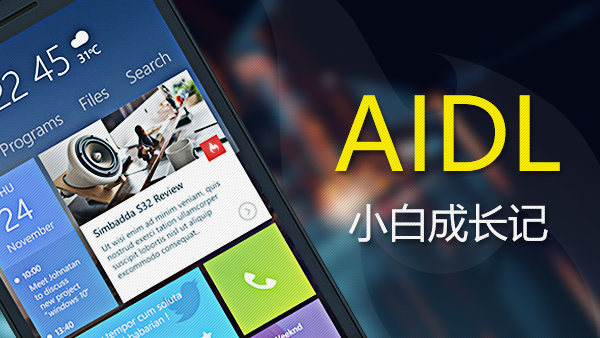有时候为了需要,会将数据库保存到外部存储或者SD卡中(对于这种情况可以通过加密数据来避免数据被破解),比如一个应用支持多个数据,每个数据都需要有一个对应的数据库,并且数据库中的信息量特别大时,这显然更应该将数据库保存在外部存储或者SD卡中,因为RAM的大小是有限的;其次在写某些测试程序时将数据库保存在SD卡更方便查看数据库中的内容。
Android通过SQLiteOpenHelper创建数据库时默认是将数据库保存在’/data/data/应用程序名/databases’目录下的,只需要在继承SQLiteOpenHelper类的构造函数中传入数据库名称就可以了,但如果将数据库保存到指定的路径下面,都需要通过重写继承SQLiteOpenHelper类的构造函数中的context,因为:在阅读SQLiteOpenHelper.java的源码时会发现:创建数据库都是通过Context的openOrCreateDatabase方法实现的,如果我们需要在指定的路径下创建数据库,就需要写一个类继承Context,并复写其openOrCreateDatabase方法,在openOrCreateDatabase方法中指定数据库存储的路径即可,下面为类SQLiteOpenHelper中getWritableDatabase和getReadableDatabase方法的源码,SQLiteOpenHelper就是通过这两个方法来创建数据库的。
/**
* Create and/or open a database that will be used for reading and writing.
* The first time this is called, the database will be opened and
* {@link #onCreate}, {@link #onUpgrade} and/or {@link #onOpen} will be
* called.
*
* <p>Once opened successfully, the database is cached, so you can
* call this method every time you need to write to the database.
* (Make sure to call {@link #close} when you no longer need the database.)
* Errors such as bad permissions or a full disk may cause this method
* to fail, but future attempts may succeed if the problem is fixed.</p>
*
* <p class="caution">Database upgrade may take a long time, you
* should not call this method from the application main thread, including
* from {@link android.content.ContentProvider#onCreate ContentProvider.onCreate()}.
*
* @throws SQLiteException if the database cannot be opened for writing
* @return a read/write database object valid until {@link #close} is called
*/
public synchronized SQLiteDatabase getWritableDatabase() {
if (mDatabase != null) {
if (!mDatabase.isOpen()) {
// darn! the user closed the database by calling mDatabase.close()
mDatabase = null;
} else if (!mDatabase.isReadOnly()) {
return mDatabase; // The database is already open for business
}
}
if (mIsInitializing) {
throw new IllegalStateException("getWritableDatabase called recursively");
}
// If we have a read-only database open, someone could be using it
// (though they shouldn't), which would cause a lock to be held on
// the file, and our attempts to open the database read-write would
// fail waiting for the file lock. To prevent that, we acquire the
// lock on the read-only database, which shuts out other users.
boolean success = false;
SQLiteDatabase db = null;
if (mDatabase != null) mDatabase.lock();
try {
mIsInitializing = true;
if (mName == null) {
db = SQLiteDatabase.create(null);
} else {
db = mContext.openOrCreateDatabase(mName, 0, mFactory, mErrorHandler);
}
int version = db.getVersion();
if (version != mNewVersion) {
db.beginTransaction();
try {
if (version == 0) {
onCreate(db);
} else {
if (version > mNewVersion) {
onDowngrade(db, version, mNewVersion);
} else {
onUpgrade(db, version, mNewVersion);
}
}
db.setVersion(mNewVersion);
db.setTransactionSuccessful();
} finally {
db.endTransaction();
}
}
onOpen(db);
success = true;
return db;
} finally {
mIsInitializing = false;
if (success) {
if (mDatabase != null) {
try { mDatabase.close(); } catch (Exception e) { }
mDatabase.unlock();
}
mDatabase = db;
} else {
if (mDatabase != null) mDatabase.unlock();
if (db != null) db.close();
}
}
}
/**
* Create and/or open a database. This will be the same object returned by
* {@link #getWritableDatabase} unless some problem, such as a full disk,
* requires the database to be opened read-only. In that case, a read-only
* database object will be returned. If the problem is fixed, a future call
* to {@link #getWritableDatabase} may succeed, in which case the read-only
* database object will be closed and the read/write object will be returned
* in the future.
*
* <p class="caution">Like {@link #getWritableDatabase}, this method may
* take a long time to return, so you should not call it from the
* application main thread, including from
* {@link android.content.ContentProvider#onCreate ContentProvider.onCreate()}.
*
* @throws SQLiteException if the database cannot be opened
* @return a database object valid until {@link #getWritableDatabase}
* or {@link #close} is called.
*/
public synchronized SQLiteDatabase getReadableDatabase() {
if (mDatabase != null) {
if (!mDatabase.isOpen()) {
// darn! the user closed the database by calling mDatabase.close()
mDatabase = null;
} else {
return mDatabase; // The database is already open for business
}
}
if (mIsInitializing) {
throw new IllegalStateException("getReadableDatabase called recursively");
}
try {
return getWritableDatabase();
} catch (SQLiteException e) {
if (mName == null) throw e; // Can't open a temp database read-only!
Log.e(TAG, "Couldn't open " + mName + " for writing (will try read-only):", e);
}
SQLiteDatabase db = null;
try {
mIsInitializing = true;
String path = mContext.getDatabasePath(mName).getPath();
db = SQLiteDatabase.openDatabase(path, mFactory, SQLiteDatabase.OPEN_READONLY,
mErrorHandler);
if (db.getVersion() != mNewVersion) {
throw new SQLiteException("Can't upgrade read-only database from version " +
db.getVersion() + " to " + mNewVersion + ": " + path);
}
onOpen(db);
Log.w(TAG, "Opened " + mName + " in read-only mode");
mDatabase = db;
return mDatabase;
} finally {
mIsInitializing = false;
if (db != null && db != mDatabase) db.close();
}
}通过上面的分析可以写出一个自定义的Context类,该类继承Context即可,但由于Context中有除了openOrCreateDatabase方法以外的其它抽象函数,所以建议使用非抽象类ContextWrapper,该类继承自Context,自定义的DatabaseContext类源码如下:
public class DatabaseContext extends ContextWrapper {
public DatabaseContext(Context context){
super( context );
}
/**
* 获得数据库路径,如果不存在,则创建对象对象
* @param name
* @param mode
* @param factory
*/
@Override
public File getDatabasePath(String name) {
//判断是否存在sd卡
boolean sdExist = android.os.Environment.MEDIA_MOUNTED.equals(android.os.Environment.getExternalStorageState());
if(!sdExist){//如果不存在,
return null;
}else{//如果存在
//获取sd卡路径
String dbDir= FileUtils.getFlashBPath();
dbDir += "DB";//数据库所在目录
String dbPath = dbDir+"/"+name;//数据库路径
//判断目录是否存在,不存在则创建该目录
File dirFile = new File(dbDir);
if(!dirFile.exists()){
dirFile.mkdirs();
}
//数据库文件是否创建成功
boolean isFileCreateSuccess = false;
//判断文件是否存在,不存在则创建该文件
File dbFile = new File(dbPath);
if(!dbFile.exists()){
try {
isFileCreateSuccess = dbFile.createNewFile();//创建文件
} catch (IOException e) {
e.printStackTrace();
}
}else{
isFileCreateSuccess = true;
}
//返回数据库文件对象
if(isFileCreateSuccess){
return dbFile;
}else{
return null;
}
}
}
/**
* 重载这个方法,是用来打开SD卡上的数据库的,android 2.3及以下会调用这个方法。
*
* @param name
* @param mode
* @param factory
*/
@Override
public SQLiteDatabase openOrCreateDatabase(String name, int mode, SQLiteDatabase.CursorFactory factory) {
SQLiteDatabase result = SQLiteDatabase.openOrCreateDatabase(getDatabasePath(name), null);
return result;
}
/**
* Android 4.0会调用此方法获取数据库。
*
* @see android.content.ContextWrapper#openOrCreateDatabase(java.lang.String, int,
* android.database.sqlite.SQLiteDatabase.CursorFactory,
* android.database.DatabaseErrorHandler)
* @param name
* @param mode
* @param factory
* @param errorHandler
*/
@Override
public SQLiteDatabase openOrCreateDatabase(String name, int mode, CursorFactory factory, DatabaseErrorHandler errorHandler) {
SQLiteDatabase result = SQLiteDatabase.openOrCreateDatabase(getDatabasePath(name), null);
return result;
}}在继承SQLiteOpenHelper的子类的构造函数中,用DatabaseContext的实例替代context即可:
DatabaseContext dbContext = new DatabaseContext(context); super(dbContext, mDatabaseName, null, VERSION);

 随时随地看视频
随时随地看视频




